1. Topological Surface Superconductivity via Josephson Coupling in Bi2Te3/Nb Films

Josephson junctions incorporating superconducting topological surface states (TSS) emerge as promising building blocks for next-generation superconducting qubits, offering a potential pathway towards improved coherence for quantum computing. However, in most experiments, Josephson coupling is often obscured by other proximity effects associated with bulk carriers. In this work, we demonstrate such a junction using a topological insulator Bi2Te3 film epitaxially grown on a superconducting Nb substrate. Cooper pairs from Nb tunnel through the insulating Bi2Te3 layers and induce superconductivity in the TSS via Josephson coupling. Using scanning tunneling microscopy at T = 0.3 K, we observe a clear superconducting gap in the TSS of Bi2Te3. The induced gap (~1/10 of that of Nb) remains nearly constant as the Bi2Te3 film thickness increases, even though the superconducting pair density decreases exponentially. These observations can be understood via Josephson pair tunneling through the nearly insulating Bi2Te3 bulk, creating a pure topological superconducting sheet. Our findings underscore the essential role of Josephson coupling for long-range pairing in the spin-helical Dirac Fermions of topological structures.
This research is the result from the international collaboration between Dr. Tien-Ming Chuang's group (Institute of Physics, Academia Sinica) and Prof. Tai-Chang Chiang's group (University of Illinois Urbana-Champaign). The work at the Institute of Physics was supported by the National Science and Technology Council and Academia Sinica.
Published in Nano Letters 25, 16387 (2025) (Nov. 8, 2025).
2. A Disorder Driven Electronic Smectic Phase in Nonsymmorphic Square-Net Semimetal GdSbTe
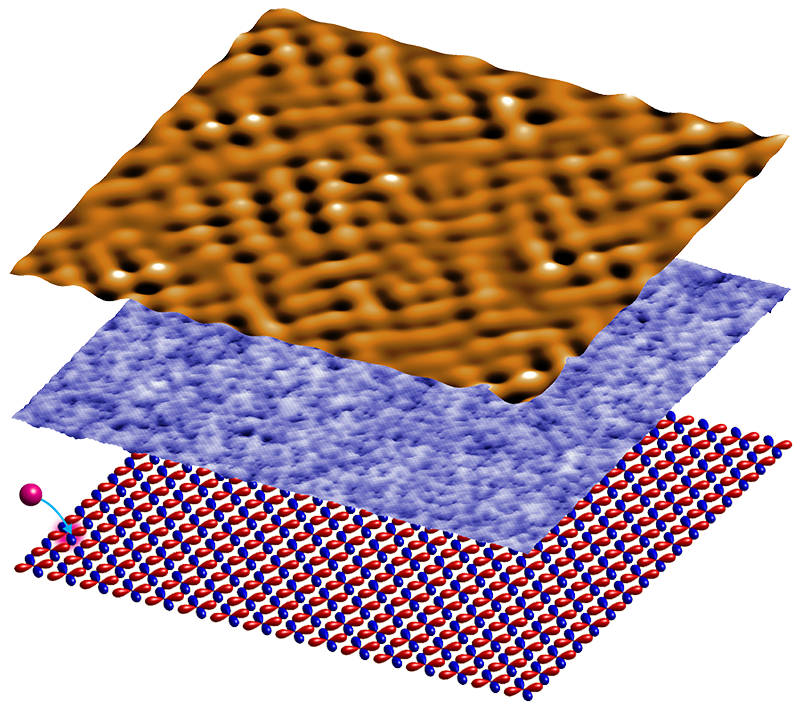
Electrons in solids can organize into unusual patterns, similar to liquid crystals, by breaking the crystalline symmetry of the host material. These so-called electronic liquid crystal phases usually appear in strongly correlated electron systems, such as high Tc cuprate superconductors.
Surprisingly, we have discovered such an electronic smectic phase in weakly correlated Dirac nodal line semimetal GdSbTe, using scanning tunneling microscopy. We demonstrate that chemical substitutions play a key role in creating these symmetry-breaking quantum phases.
Our findings advance the microscopic understanding of electronic liquid crystal phases in quantum materials and present a novel platform for exploring the interplay among quenched disorder, Dirac fermions and electron correlation.
This research was carried out by an international team, including Dr. Tien-Ming Chuang (IOP), Dr. Hsin Lin (IOP), Dr. Raman Sankar (IOP), Prof. Tay-Rong Chang (NCKU), Prof. Adrian Del Maestro (U Tennessee), Prof. Ming-Wen Chu (NTU), and Dr. Ying-Jer Kao (NTU). The work at the IOP was supported by Innovative Materials and Analytical Technology Exploration (iMATE) Program, Taiwan Consortium of Emergent Crystalline Materials (TCECM) program, and the National Science and Technology Council.
Published in npj Quantum Materials 10, 56 (2025) (June. 7, 2025).
3. Enhancement of the critical field in nanoscale ultra-thin Pb film network
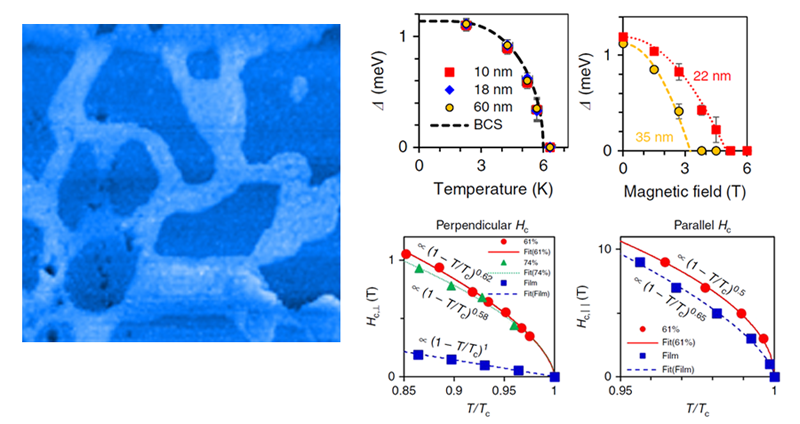
The ability for a superconductor to survive under high magnetic fields is crucial for its applications. Our team used the MBE technique to grow the single crystalline Pb into a nano-mesh of 2nm thickness. By using low temperature scanning tunneling microscope, mutual inductance measurements and magneto-transport measurements, we found that the Pb nano-mesh maintains strong global phase rigidity, thus retaining the Tc close to that of a bulk crystal. The parallel critical field is significantly higher than the Clogston limit as a direct consequence of ultra-thin geometry and strong spin orbital coupling. In the perpendicular field, the orbital pair breaking is also quenched until the magnetic length becomes smaller than the lateral dimension of the nano-mesh. The inverse correlation of the lateral width and local HC⟂ points to a possibility to achieve much higher HC⟂. This work demonstrates that superconductivity pair breaking can be significantly suppressed by nanoscale engineering and opens new strategies to optimize superconducting quantum devices.
This work is in collaboration with Chih-Kang Shih and Allan MacDonald's group at University of Texas.
Published in Nature Communications 9, 5431 (2018) (21 Dec, 2018).
4. Our research facility is featured by Academia Sinica
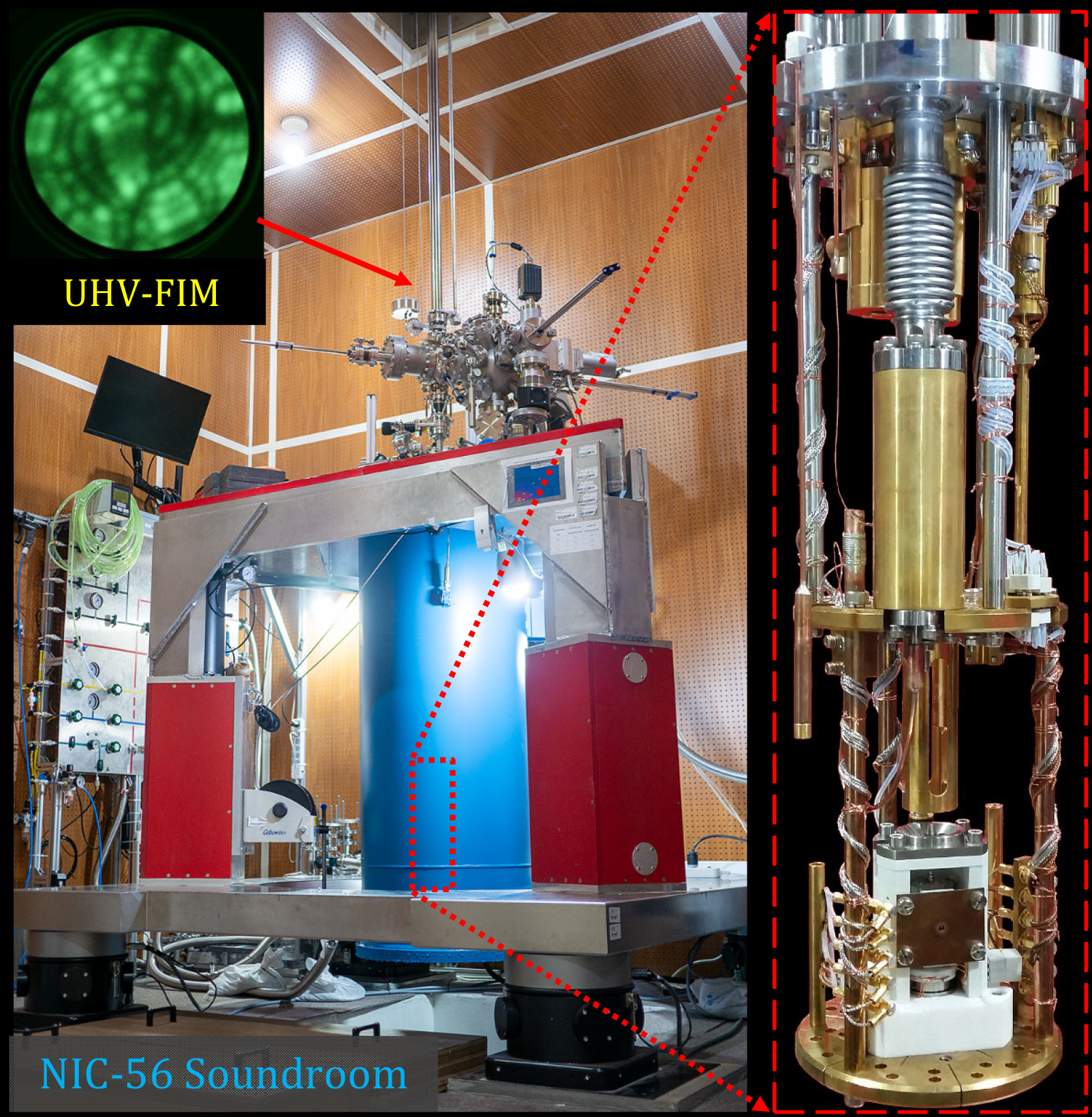
Published online in 研之有物 and 泛科學 (5 Jun, 2017).
5. Superconducting Topological Surface States in PbTaSe2
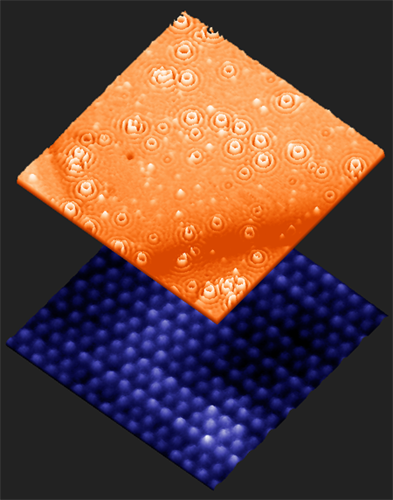
The simplest approach to achieve topological superconductivity (TSC) is find a stoichiometric s-wave superconductor with topological surface states across Fermi level in the normal state. By using our SI-STM technique, we confirm the spectroscopic signature of the calculated topological band structures and superconducting properties in PbTaSe2. Fully gapped superconducting topological surface state is reported for the first time in a stoichiometric bulk material. Our work shows PbTaSe2 is a promising TSC candidate.
Published in Science Advances 2, e1600894 (23 Nov, 2016).
Highlighted by Institute of Physics, Academia Sinica (English version)
Highlighted by Institute of Physics, Academia Sinica (Chinese version)
6. Anisotropic Energy Gaps of Iron-Based Superconductivity from Intraband Quasiparticle Interference in LiFeAs
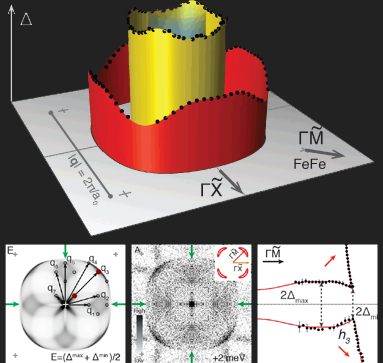
We introduce intraband Bogoliubov QPI techniques for determination of superconducting gap structure, Δi (k) in superconducting LiFeAs. At T=1.2K, we can reach the necessary energy resolution of ~350μeV in order to resolve Δi (k). We identify three hole-like bands from our data. A comparison of our data to both ARPES and quantum oscillation measurements identifies these bands with those previously assigned as α1, α2 and γ by ARPES. Our results directly determine the anisotropy, magnitude and relative orientations of their Δi (k). The Δi (k) reported later in ARPES studies of LiFeAs appear in excellent agreement with our observations for the γ and α2 bands.
This work is in collaboration with Cornell University (USA) , Brookhaven National Lab(USA), University of St. Andrews (UK) and National Institute of Advanced Industrial Science and Technology(Japan)
Published in Science 336, 563 (4 May, 2012).